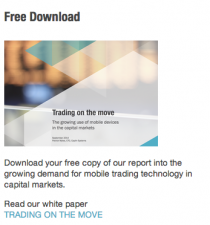Following Paul Blank’s post in May of this year about the market share of single-dealer platforms vs multi-dealer platforms, I’ve been looking at a number of industry surveys, and the thing that leaps off the page at me is the growth in the adoption of electronic trading for Fixed Income products, and in particular the growth in the use of single-dealer platforms for this asset class.
According to the Barclays Capital “2009 Survey on Electronic Trading” 96% of those surveyed who trade OTC derivatives expect to trade the same or a higher proportion electronically over the next 12-18 months compared to the trade volumes to date.
And data we’ve extracted from the SIFMA 2009 Trends Survey (included below) clearly shows that the preferred channel showing the largest year-on-year growth in every asset class is single-dealer portals, with multi-dealer and exchange channels mostly staying the same or reducing (CDSs are the exception where exchange channels have grown in preference). The SDP year-on-year growth varies from 50% in CDSs to over 600% in US Treasuries. Admittedly the absolute proportion of FI business conducted through single-dealer channels is small, but it’s growing more quickly than any other channel, as this data shows.
(click to enlarge)
So what can we deduce from this data?
Clearly there’s a trend towards more electronic trading. This makes sense because electronic trading is more cost effective and results in substantially fewer rejected transactions. It also means that a dealer can maximise the volume of transactions because it’s not limited by the number of available sales traders.
The move away from exchanges and towards single-dealer platforms indicates a desire to remove intermediation between dealer and client – this avoids the commoditisation of products and also avoids paying a commission to the intermediary – often meaning that both the dealer and the client get a better deal.
The SIFMA 2009 “Buyside Considerations (Fixed Income) 2009” survey clearly indicates that the buy side will select a trading venue primarily for pricing consistency and speed of execution – rather than just absolute price or range of products as you might expect. This also favours single-dealer platforms where the dealer is providing liquidity directly.
My conclusion is that we will see greater volumes of FI transactions moving to electronic venues and away from voice, email and IM; the most likely electronic venue will be the dealers’ own SDP.
Filed under: Mike Hill, Single-Dealer Platforms |




or more likely mutli-dealer unless SDPs can ‘somehow’ fit under the SEF umbrella. More on that from CFTC and SEC in the next few months…
As you imply, the effect of the new legislation isn’t clear yet – we all watch with interest to see what qualifies as a Swap Execution Facility (SEF)…